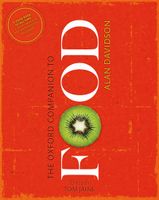Advertisement
Ergot in Rye
Published 2014
Rye suffers from a peculiar disease called ergot, caused by the fungus Claviceps purpurea. The organism invades the grains and replaces them with swollen black or purple lumps. Rye in this condition, which is quite easy to spot, is described as ‘spurred’. It can be excluded from the harvest by sieving the grains after threshing. Ergot-infected grains are much larger than those that are unaffected. Ergot is exceptionally poisonous. Eating even a small amount of it causes hallucinations, and death. The outbreaks of ‘dancing mania’ and other aberrations which affected whole villages in the Middle Ages were generally caused by ergot, as were, it is suggested, the wilder accusations surrounding the witch trials in Salem, Massachusetts, in 1692. The active substance which produces hallucinations is lysergic acid, a form of which is the drug LSD. Not only hallucinations, but dry gangrene and the loss of extremities are the terrible consequences of ingestion (


